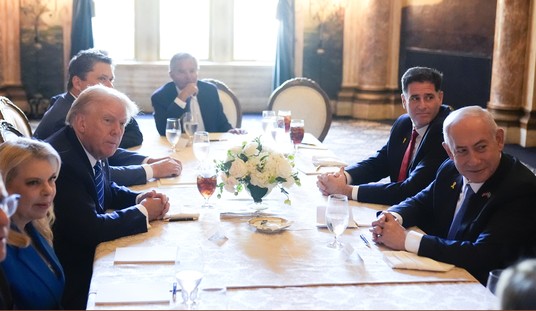This isn’t a total whiff, as she makes clear that the vaccines do an excellent job of preventing the kind of severe illness that lands people in the hospital. She’s incentivizing vaccination by pointing that out.
But she could be incentivizing it more.
Watch a few minutes of her exchange with Wolf Blitzer starting at around 1:00, when he asks about breakthrough infections. What’s missing?
“Our vaccines are working exceptionally well,” CDC Director Dr. Rochelle Walensky tells @wolfblitzer. “They continue to work well for Delta, with regard to severe illness and death – they prevent it. But what they can't do anymore is prevent transmission." pic.twitter.com/s83YyBQqeh
— The Situation Room (@CNNSitRoom) August 5, 2021
“What they can’t do anymore is prevent transmission.” Hearing that, you’d be justified in concluding that the vaccinated and unvaccinated are now equally likely to get infected and to infect others. But that’s not remotely true. What the CDC deduced from the Provincetown data and other studies is that if a vaccinated person is infected then he or she might be equally capable of transmitting the virus as an infected unvaccinated person is.
But that’s a long, long way from saying that the vaxxed and unvaxxed are at equal risk of getting COVID. They are not.

That ratio may have tightened up a bit with the advent of Delta but it’s a cinch that the unvaccinated are still getting infected at a much higher clip than the vaccinated are. (Especially the recently vaccinated, I’d guess.) Somehow Walensky never mentions that in her bit with Blitzer. She didn’t mention it in a tweet she published last night highlighting her CNN interview either. Immunization gives you extremely high protection against hospitalization and death but also decent protection against infection.
This data from one California county makes the point starkly:
I'd take the 1:10 odds for vaccinated: not vaccinated
Getting a Delta infection in San Diego County (pop 3.5 million), current data #VaccinesWork against Delta@SDCountyHHSA pic.twitter.com/DSe5uiAjbT— Eric Topol (@EricTopol) August 6, 2021
“[T]he unvaccinated continue to be the big highway of transmission,” said infectious disease expert William Schaffner to CNN recently. “The vaccinated, they’re little side streets.” Why isn’t Walensky hammering that point? Some vaccine holdouts listening to her may decide that if they’re destined to catch COVID whether they’ve had their shots or not, they might as well skip them.
But they’re not destined. The shots might very well spare them from infection entirely.
Some vaccination proponents have lost what’s left of their patience with her messaging missteps:
It’s obvious that Walensky and the admin have adopted a strategy of misinforming the public and downplaying vaccine efficacy to justify their masking recommendations. Lying to the public in those positions is unacceptable and indefensible.
— AG (@AGHamilton29) August 6, 2021
On top of that, when CNN recently tried to get some key information out of the CDC about its new mask guidance, it was inexplicably stonewalled:
If you’ve watched cable news, read a newspaper, or surfed the internet, you’ve probably come across this map of the United States showing areas of “substantial” and “high” spread of the coronavirus. The CDC has defined “substantial” community transmission as areas of 50 or more cases per 100,000 people. And it has defined “high” rates of transmission as areas with 100 or more cases per 100,000 people. These numbers have significant implications for local governments, given the CDC’s recent guidance. But, while CDC may be providing definitions for the thresholds, it is still not saying how it decided on the figures behind the definitions.
I have personally asked CDC spokespeople for more than a week to help explain its calculus, but I have yet to receive an answer. In fact, on Thursday a CDC spokesperson told me that to get an answer I’d need to submit a Freedom of Information Act Request. When I pushed back, noting that I was simply asking for an explanation of the science that informed the CDC’s decision making, I was told that the email directing me to submit a FOIA request “wasn’t meant” for me. The spokesperson then reiterated the CDC would “get back” to me when it had “something to share.” I’m still waiting.
The new guidance based on the Provincetown study recommended masks indoors even for vaccinated people in areas of “substantial” transmission. That recommendation is why there’s now a mask mandate in place in Washington D.C., which recently — and barely — crossed the numerical threshold of “substantial” transmission. But how can Washingtonians rightly be asked to mask if the CDC won’t explain why the threshold is what it is?
It wouldn’t be the first time during this pandemic either that the agency had grabbed at an arbitrary number and then built an entire national precautions regime around it.
I’ll leave you with this, a reminder that it may not matter what Walensky or anyone else has to say at this point. Views on COVID precautions are so deeply politicized now that many people will respond to them according to what their tribe believes, not what the data indicates.








Join the conversation as a VIP Member